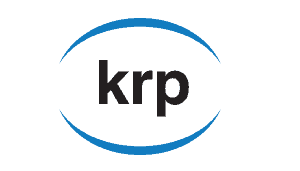December tax news: Luxury tax updates, calculating entertainment expenses—and more

PROPOSED LUXURY TAX ON EXPENSIVE CARS, BOATS AND PLANES
The Liberal government is planning to introduce a new Luxury Tax, to take effect on January 1, 2022. It will apply to:
- new cars, SUVs and pick-up trucks costing over $100,000
- boats costing over $250,000
- certain aircraft costing over $100,000
The tax will be 20% of the excess over the $100,000 or $250,000 threshold, but with a maximum of 10% of the value of the car, boat or aircraft. It will apply to both sales and importations. Exports will not be subject to the tax.
Manufacturers, wholesalers and retailers will register with the Canada Revenue Agency under the Luxury Tax regime, and the tax will not apply to sales between any of them (e.g., from a manufacturer to a car dealer). It will apply to sales to unregistered persons. The tax will be imposed on the registered person (unlike the GST/HST, which is imposed on the customer and collected by the seller).
The Luxury Tax will be included by the seller in the total price, and GST or HST (and provincial sales tax) will then be calculated on the price that includes this tax. Thus, the cost of the Luxury Tax will in effect be 5% to 15% higher than the actual figure.
The rules for cars will cover any motor vehicle designed primarily to carry fewer than 10 passengers on highways and streets, but will not include an ambulance, hearse, combine harvester, backhoe tractor, motorcycle, snowmobile, motor home, or a racing car or all-terrain vehicle that is not road legal. The tax will not apply to vehicles over 3,856 kg gross vehicle weight. As well, a vehicle clearly equipped for police, emergency-response or military activities will be exempt if it is being delivered to (or imported by) a police, emergency-response or military authority. The tax will also not apply to vehicles delivered to a police or fire department, hospital, municipality, and certain other entities.
Details are also provided for the rules for boats and aircraft. The rules for aircraft will have a number of exclusions, such as aircraft used by airlines, charter services and flight schools, and those designed for cargo or military use. The rule for boats will apply to those designed for leisure, recreation or sport and so will exclude commercial fishing vessels, ferries and cruise ships.
Modifications to any of these goods will trigger the tax as well (with exceptions for certain modifications made to accommodate disabilities, such as wheelchair lifts).

PROPOSED VACANT/UNDERUSED HOUSING TAX
The Liberal government is planning to introduce a new Underused Housing Tax (UHT), to take effect on January 1, 2022, as part of its efforts to reduce housing prices so as to make homes more affordable to Canadian residents.
The tax will apply to:
- residential real estate
- that is owned by non-resident non-citizens
- and that is considered to be vacant or underused.
The tax will apply at 1% per year of the value of the property. “Value” will be the higher of the assessed value for municipal property tax purposes, and the most recent sale price. Or the owner can elect to provide an appraisal to demonstrate fair market value.
The tax will not apply to Canadian citizens or permanent residents of Canada, or to a corporation incorporated under Canadian law that is listed on a Canadian stock exchange. It will apply to other Canadian corporations that have 10% or more foreign ownership (or share voting rights). It will also apply to property held through partnerships and trusts.
The tax will not apply to property that is uninhabitable or inaccessible for part of the year and is thus not suitable for year-round use. This will include if it is undergoing renovations for at least 4 months of the year — provided the work is being diligently pursued, and this “renovations” exemption will be allowed only once every 10 years.
A foreign owner will be required to file a declaration on the property with the CRA every year. A property will need to be lived in for “periods of at least one month that total at least 6 months of the year” to be exempt from the tax.
The declaration will have to be filed by April 30 each year. The penalty for not reporting the tax owing will be a minimum of $5,000 per year, but will be 5% of the tax, plus 3% for each month the reporting is late, with no maximum. For example, if an owner is 5 years late in filing all returns by April 30 of the next year, the penalty as of May 1 of Year 6 will be 3×60+5 = 185% of the tax for Year 1, plus 3×48+5 = 149% of the tax for Year 2, plus 113% plus 77% plus 41% for Years 3, 4 and 5, for a total penalty of 565% of the tax (with the tax itself increasing year to year as the property value increases). These exponential increases will make it extremely important for non-resident owners to comply. As well, if the report is not filed by December 31 of the year after the year to which it applies, the various exemptions (including for property that is rented out) will not apply for purposes of determining the penalties.
Beginning in 2023, an application for a “section 116 certificate” for a residential property (required when a non-resident sells real property in Canada, as otherwise the purchaser must withhold 25% of the purchase price and send it to the CRA) will trigger a CRA review of whether the UHT has been reported and paid.
If you have relatives or friends outside Canada who own residential property here, you should inform them of this tax and the stringent reporting obligations that will apply starting April 2023, as well as the sever penalties for not reporting.
OTHER TAX CHANGES WE MIGHT SEE SOON
As you know, the Liberals were re-elected on September 20, 2021 with a minority government that has much the same composition as the 2019-2021 government. Once again the Liberals need the support of only one of the NDP, Bloc Québécois or Conservatives to pass any particular piece of legislation in Parliament.
The following are some of the tax changes we may see:
- Anti-abortion organizations to be denied charitable status
- Banks and insurance companies: surtax and “Canada Recovery Dividend” on profits over $1 billion
- Canada Emergency Wage Subsidy (CEWS) and Canada Emergency Rent Subsidy (CERS): extended through winter 2021-2022 for tourism industry; and Canada Recovery Hiring Program (CRHP) extended to March 31, 2022 [these changes will definitely proceed, as announced by the Department of Finance on October 21]
- Canada Financial Crimes Agency to be formed
- Canada Workers Benefit: enhancements
- Capital cost allowance: immediate expensing for Canadian-controlled private corporations of up to $1.5 million of certain investments such as software, patents and machinery
- Carbon tax and credits to be increased
- Caregiver credit to be expanded and made into a refundable credit
- Disability Benefit Act to be enacted
- Disability tax credit: comprehensive review on its application to mental health
- Flow-through shares for oil, gas and coal to be eliminated
- General anti-avoidance rule (GAAR): amendments to “focus on economic substance”, and to cover foreign tiered structures
- Health care professionals: one-time $15,000 deduction over first 3 years of practice (possibly only in rural and underserved communities)
- Home office deduction: simplified $2/day deduction to be extended through 2022 and increased from $400 to $500
- International tax:
— digital news platforms to be required to share revenues with Canadian news outlets
— global minimum tax on very large multinationals, as part of OECD project
- Investment tax credits for ventilation systems and clean technology
- Medical expense credit to include cost of reimbursements to surrogate mother for IVF expenses
- Mineral Exploration Tax Credit: doubling the credit for certain minerals
- Minimum tax of 15% for those in the top tax bracket
- Oil and gas: eliminating all tax support
- Personal tax credits (new):
— Career Extension Tax Credit
— “EI-like” system for self-employed persons, to parallel Employment Insurance
— Home Appliance Repair Credit
— Labour Mobility Tax Credit
- Residential property:
— anti-flipping tax denying principal-residence exemption on a quick sale
— ban most purchases with “foreign money” for 2 years
— curb “excessive” profits on rentals earned by large owners
— extend the tax on vacant and underused housing (see previous article) to include land in large urban areas
— First Time Home Buyer Credit to be doubled
— Home Accessibility Tax Credit to be doubled
— Multigenerational Home Renovation Credit
— Registered Home Savings Plan (First Home Savings account)
— surtax on excessive increases in residential rent following renovations
- Scientific Research credit program: reducing red tape and making the program “more generous for those companies who take the biggest risks”
- Student loans: eliminating all federal interest, and allowing new parents to pause repayment until their youngest child reaches age 5
- Tax avoidance and aggressive tax planning: more money for CRA
- Tax Court of Canada: more funding for modernization
- Teachers’ school supplies credit: increased and expanded
- Tobacco manufacturer fees imposed, and new tax on vaping products
- Workers employed by digital platforms to be treated as employees for EI and CPP purposes.
THE GST/HST “QUICK METHOD”
If you operate a small business that consists of providing services, and you have relatively few expenses (e.g., you operate from your home), you may be able to profit from the so-called “Quick Method” of filing your GST/HST returns.
Generally, as you know if you carry on business, you can claim “input tax credits” (ITCs) to recover GST or HST that you pay on your purchases. You deduct these ITCs from the GST/HST that you bill to your clients, and the difference, called “net tax”, is what you remit to the CRA every year (or quarter or month, depending on your filing frequency).
A small business with total GST/HST-included sales up to $400,000 can elect to use the Quick Method.
Under this method, a service business outside the HST provinces remits 3.6% of GST-included sales (i.e. 3.78% of sales) minus $300, rather than 5% of sales minus input tax credits, and claims no ITCs except on capital property purchases (e.g. a computer which you don’t expense but instead claim capital cost allowance to depreciate over several years).
For Ontario, where the HST rate is 13%, the remittance is 8.8% minus $300. In the Atlantic provinces it is 10% minus $300.
(The rates are different if you are charging different GST/HST rates to your customers than the rate for your province of residence. Also, the rates for a business selling goods are different.)
This usually allows for simpler calculation, and permits service providers that have few taxable expenses to “profit” from the GST/HST.
Example
Suppose you are in Ontario, and you bill clients $100,000 a year for your services plus 13% HST ($13,000). You have expenses of $5,000 plus 13% HST ($650).
Your “regular” GST/HST remittance for the year would be $13.000 minus $650, or $12,350.
But if you elect to use the Quick Method, you need to remit only 8.8% of $113,000 minus $300, or $9,644, so you can save over $2,700 (though the amount you save may be subject to income tax).
To use the Quick Method, you have to file an election with the CRA (Form GST74), or with Revenu Québec if you live in Quebec (Form FP-2074-V). The deadline for filing the election, if you are an annual filer, is the first day of the second quarter of the year. So if you use the calendar year for your reporting, you have to file the election by April 1 of a year to use the Quick Method for that year.

MEAL AND ENTERTAINMENT EXPENSES
The Income Tax Act limits most food, beverage and entertainment expenses to 50%, on the theory that some consumption is always personal. Thus, if you take a client (or group of clients) to dinner or a hockey game and spend $400, and your purpose is purely business, you can only deduct $200 from your business income. And if the amount you pay is not “reasonable in the circumstances”, you can deduct only half of the amount that is “reasonable”.
The same rule applies to GST/HST input tax credits — you can claim only half.
In the Stapley case in 2006, a real estate broker was allowed only 50% deduction for vouchers for meals, drinks and entertainment he gave to clients, even though he did not participate in the consumption or enjoyment. The Federal Court of Appeal acknowledged that this was “unfair”, but it is how the law applies.
However, the Tax Court has given taxpayers a break on occasion:
- Caldwell (2003) — the cost of doughnuts given as gifts to clients was allowed in full, as not equating to a “meal”, although the Income Tax Act actually refers to “food, beverages or entertainment”.
- T. Evans Electric (2002) — a corporation used its plane to take clients on fly-in fishing trips. The Court allowed full GST input tax credits for the plane operating costs, since “entertainment” does not include transportation: “Flying in a noisy little Cessna to get to the fishing may be enjoyable to some, but likely not to most. The fishing starts when you get to the lake.”
However, there are several specific exceptions to the 50% rule, in the legislation:
- Long-haul truck drivers are allowed 80% rather than 50% (because such drivers have no choice about incurring meal expenses).
- If you are compensated (or expect to be) in the ordinary course of your business of providing food, beverages or entertainment for compensation. So if you operate a restaurant, for example, the limitation does not apply to your food costs.
- If you are compensated for the expense, and the compensation is reasonable and specifically identified in writing. Thus, for example, if you are a consultant working on a project for a client and bill $100 for meals as a disbursement, you can deduct the full $100 (and then include it back in income because you have billed it out as part of your fees). But then your client will be subject to the 50% rule when reimbursing you.
This exception can also apply to a company that buys food for its employee cafeteria, as long as the prices it charges the employees are above cost and are “reasonable”.
- If the meals or entertainment are provided to an employee under certain conditions, such as where it is a taxable benefit to the employee, or where it qualifies as a remote work site or construction work camp.
- Amounts paid for up to 6 special events a year at which the meals or entertainment are generally available to all employees at that place of business. This covers office parties open to all staff.
- If the cost relates to a fund-raising event, the primary purpose of which is to benefit a registered charity. (The expense must still be a legitimate business expense for the person claiming it.)

PLANNING TIP ON SELLING A DECEASED TAXPAYER’S HOME
Generally, capital losses on “personal use property” are disallowed for tax purposes (with an exception for losses on “listed personal property” (LPP) such as art, stamps and coins, which can be claimed against LPP gains).
After a death, however, there is a planning opportunity that can be used to reduce a deceased’s tax bill.
If the deceased owned a home in which no-one else was living at the time of death, and no-one lives there after the death, then the home is not “personal-use property” to the deceased’s estate, because it is not used by the estate or by any beneficiary for their personal use and enjoyment. The CRA confirmed, in a 2011 conference statement (2011-0401871C6), that it agrees with this.
Since the home is not personal-use property, its sale can generate a capital loss. For tax purposes, the estate is deemed to have a cost of the home equal to the home’s value on the day of death. If the home is sold fairly quickly (so that the value has not changed), the costs of the sale, including realtor commission and legal fees, will result in the estate receiving less than cost as proceeds of the sale. The result will be that the commission and legal fees create a capital loss to the estate. The Income Tax Act allows an election for half of this loss (the “allowable capital loss”) to be carried back and deducted in the deceased’s final year, thus reducing the deceased’s tax owing for that year.
This can be a useful claim to make if the deceased’s home is sold by the estate without anyone else living there.

AROUND THE COURTS
Industry Canada loan was considered “government assistance”
Businesses can claim substantial investment tax credits for “scientific research and experimental development” (SR&ED) that is done in areas of technological uncertainty. However, the credits are reduced where the business has received “government assistance”, such as a grant to fund the SR&ED work.
In the recent CAE Inc. case, CAE received a large loan from Industry Canada to help fund a particular technology development project. The loan was made over a five-year period, and was repayable over 15 years with an effective interest rate of 2.7% (substantially lower than the 7.15% CAE was paying to private lenders). The loan also had some features that a private lender would not require, such as requiring the work to be done in Canada, and restricting CAE from selling the resulting technology.
The CRA assessed CAE to reduce its investment tax credits and to include part of the loan in CAE’s income, on the basis that the loan was “government assistance”. CAE appealed to the Tax Court of Canada, arguing that a loan that was always going to be repaid in full was not “government assistance”.
The Tax Court agreed with the CRA and dismissed CAE’s appeal. Based on previous case law, any loan that was not done in the same way as a normal commercial loan could be considered “government assistance”.
CAE has appealed this decision to the Federal Court of Appeal. If the decision is upheld, it will be a reminder to all businesses that get government loans on favourable terms that there may be negative tax consequences to receiving the loan, even if the loan bears interest and is repayable.
***
This letter summarizes recent tax developments and tax planning opportunities; however, we recommend that you consult with an expert before embarking on any of the suggestions contained in this letter, which are appropriate to your own specific requirements. For assistance with your tax planning and accounting needs, contact a member of our team.


